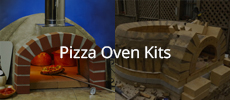rsandler Thanks for your input.
I’m questioning whether I will add the thermometer or not now. Add it in the door means cutting holes for it, that at a later stage I might regret. When I‘m n it clear on something, my ideas start as seeds and evolve as I become clearer and more informed. I‘m not attached to adding the thermometer, and remaining flexible as to if, or where I might add it if I choose to proceed with that.
I‘m still researching and informing myself with my door design.
I would like to use stainless steel to make the shell. I have a piece of 10 cm thick calcium silicate insulation left over from what I used under my floor.
Stainless steel shell
Trying to use minimal thicknesses so the door stands up to its life, I thought 1.5 - 2mm thick on the sides, back and bottom (2.92kg), with 3mm thick front (2.82kg). Estimated total 5.74 kg only for the stainless shell.
Calcium Silicate fill
The Calcium silicate weighs in at around 5 kg, and then I would have handles to consider. That would make my door around 11-12 kg in total, solid but hefty.
Ceramic Fibre fill
As an alternative fill, I could also use Ceramic fibre blanket, much lighter at approx 1.8 kg to fill the shell. The door in total would come in then around 8 kg, and 3-4 kg lighter than if I were to use the Calcium silicate.
The Ceramic Fibre blanket is 128KG/m³, with rated max temp of 1260C (vs Calcium silicate 1000C). Theoretically Ceramic fibre is lighter, and withstands higher temps.
I‘m all for lighter given I will be sliding the door in and out more than others. What would be good to know before deciding, if someone knows, is the performance difference between the two types of insulation. Using 10 cm fill in the door, how likely is it that the outside of the door will get hot? I know the heat will conduct along the sides, but here I‘m more interested in what heat will get though that insulation.








Leave a comment: